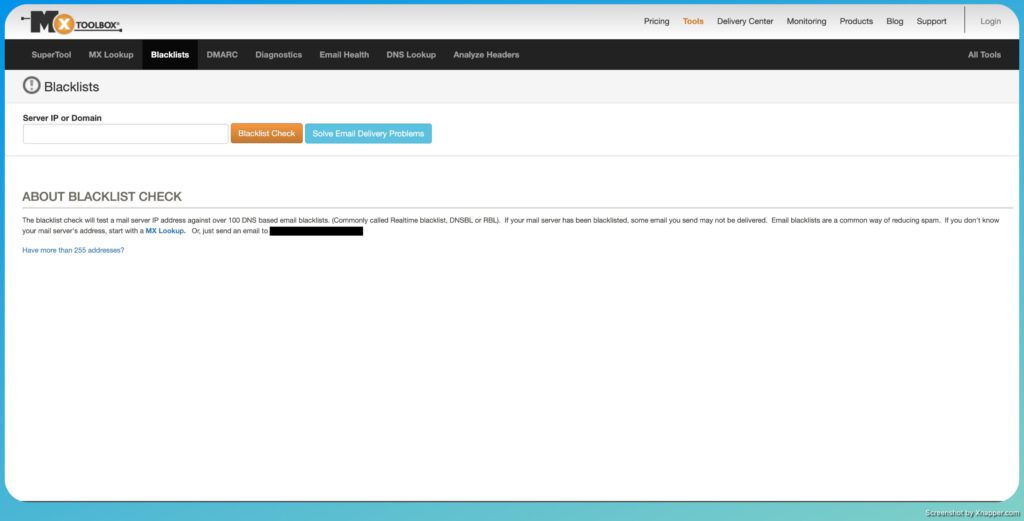Want to try live ? Try our free demo website
Blacklisting is the process of placing a domain, IP address or sender on a block list, generally used by email providers to filter spam and unwanted emails. Blocking or filtering emails from that source can occur as a result.
The principle of the blacklist is to maintain a list of entities such as IP addresses, domains or senders, which are identified as being associated with undesirable activities such as spam, abuse or malicious behaviour. Email service providers use these lists to filter incoming and outgoing email, blocking or quarantining messages from blacklisted sources to protect users from spam and online threats.
To check whether your server is on a blacklist, you can use online tools such as Mxtoolbox or Spamhaus. These tools will help you determine whether the IP address of your domain name is on a blacklist.

To find the public IP address of your server, you can visit whoishostingthis.com and enter the domain name you use for your mailings.
There are two types of domain name blacklist. The first type checks the addresses (URIs) of spam websites, while the second type identifies the domain names present in an email. Spamhaus is one of the best known of the latter type.
Among the most notable URI-type blacklists are SURBL and URIBL.
Other commonly used blacklist services include CBL, Barracuda and SORBS.
Using these tools and monitoring these blacklists allows you to quickly discover if your server is blacklisted and take the necessary steps to resolve the issue, thus improving the deliverability of your emails.
Firstly, act proactively! Don’t let your deliverability rate fall before taking action!
Before contesting your inclusion on a blacklist, it’s crucial to understand what got you there in the first place. Spam, phishing, malicious content, or a simple mistake? Identifying the source of the problem will enable you to correct it effectively.
Once you have identified the cause, you can then submit a delisting request to the relevant blacklist. Most blacklists will ask you for detailed explanations.
The processing time will depend on the clarity and accuracy of your explanation. A well-argued and justified request can lead to the quick removal of your IP address or domain name from the list.
However, a vague or incomplete explanation risks prolonging the process, or even keeping you on the blacklist until you provide more precise information.
By following these tips and staying attentive to your sender reputation and emailing practices, you can significantly reduce the risk of being blacklisted and maintain high deliverability for your email campaigns.
If you want to become an expert in deliverability, don’t hesitate to read our article
👉 Maximizing email deliverability tips and tricks 2024